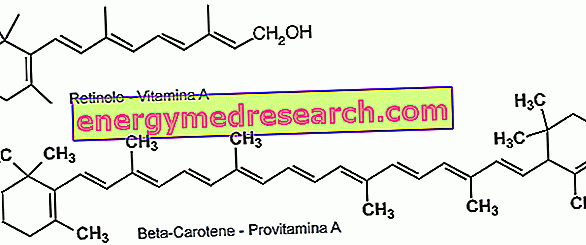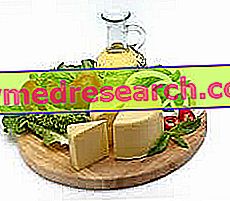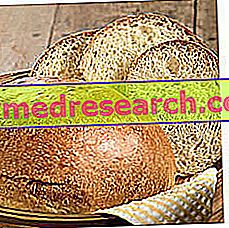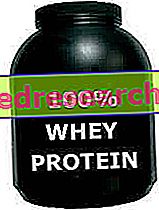What are
Provitamins are semi-essential nutritional molecules very similar to vitamins; in fact, the root shows that these are isomers, dimers or precursors of specific essential vitamins; the conversion of provitamins into vitamins takes place thanks to some enzymatic reactions of the organism.
Provitamin A
A classic example of provitamine is given by the numerous chemical variants of retinol (vit A); today we know about ten types, but the most common are:
- Carotenoids: contained in green and yellow vegetables
- Retinol esters: contained in foods of animal origin
All retinol esters are liposoluble provitamins bound to other fats, therefore, during digestion they need pancreatic enzymatic hydrolysis (lipase and carboxylester-lipase), and intestinal hydrolysis (retinyl ester ester hydrolase present on the enterocyte membrane). The absorption of retinol occurs by facilitated diffusion and depends above all on the quantity of provitamin ingested, on the lipid composition of the meal and on the concentration of bile acids poured into the intestinal lumen; the conversion of provitamin into vitamin A takes place in the intestinal lumen, therefore, in the lymphatic circulation (first lipid transport pathway) it is already available as an active molecule. Retinol has very important functions in maintaining visual integrity and cellular differentiation.

Provitamin D
Other very important precursors are provitamins D, of which the major exponent is ergosterol (provitamin D2), of mainly fungal origin. These are ubiquitous steroid molecules in food; they are converted into vitamin D at the metabolic level, more precisely in the skin. The chemical process involved is photo-dependent, that is, it can ONLY manifest itself after exposure to sunlight (ultraviolet). If the diet is deficient in provitamins or sun exposure is insufficient, disturbances in calcium metabolism and skeletal ossification may occur.

Provitamin B5
Panthenol, or provitamin B5, is the inactive molecule of the pantothenic acid vitamin; panthenol is widespread among foods and guaranteeing their supply with food is not a common problem. Being a pantothenic acid precursor, provitamin B5 is fundamental to the formation of coenzyme A, an essential component in the metabolism of carbohydrates, amino acids, fatty acids and steroid compounds. Panthenol is also commonly referred to as "beauty vitamin", thanks to the action favoring the maintenance of skin tone, elasticity and hydration, as well as in repairing damaged hair.

Functions
The provitamins are numerous and all fundamental to guarantee the necessary intake of vitamins; although not yet in the active form, they still represent an excellent source of molecules indispensable to the metabolism of the human being.
Except for ergosterol, it is possible to affirm that despite the function of the provitamins subordinate to the enzymatic action of our organism, they undoubtedly represent an extremely important category of nutrients, without which it would significantly increase the risk of hypovitaminosis.



